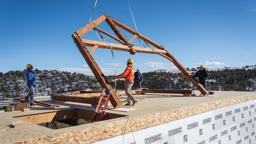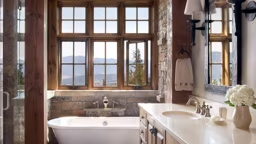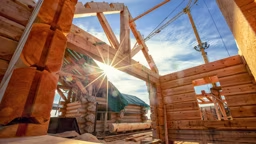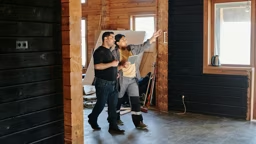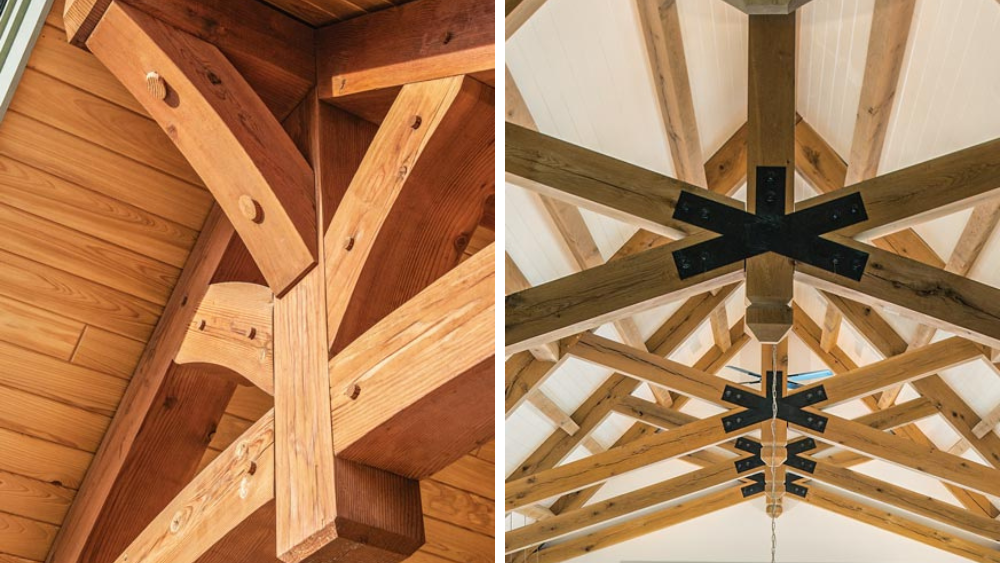
The left image shows traditional timber framing as compared to the right, which showcases post-and-beam construction. (Left photo: Heidi Long; Right photo: Photo courtesy of Woodland Timberframing)
In the world of timber home construction, there are plenty of new terms to learn: spline, purlin, chamfer — the list goes on. But there are two phrases you’ll want to be clear on before continuing your timber home building journey: “post and beam” and traditional “mortise and tenon” timber framing. These phrases refer to the two construction methods used to build timber homes.
Before we delve into key differences between the techniques, it’s important to note that both rely on timbers formed into bents to create a home’s frame, both allow for open floor plans with cathedral ceilings and both ensure that the timber frame stays front and center.
So, if both techniques produce the same outcome — a well-built timber home — what’s the difference? In brief, how the timbers are connected.
Traditional timber framing uses wood-on-wood mortise-and-tenon joinery, which involves three components: a cavity cut into the end of a timber (mortise), a precisely cut projection (tenon), and a hardwood peg to secure them together for added strength. Because of the precision required in this type of joinery, the material and labor costs often come with a higher price tag.
A more simplified form of joinery, post-and-beam construction relies on timbers being butted (rather than fitted) together and connected by metal plates and fasteners, usually steel screws, plates and bolts, in place of wood joinery. In addition to being a bit more budget-friendly, due to lower manufacturing and labor costs, this type of construction is popular with homeowners seeking an industrial vibe. The black metal plates against the natural wood grain serve as a distinct, eye-catching detail, though the fasteners can be hidden, if desired.
Whether you’re a purist when it comes to wood joinery or prefer the bold aesthetic of post-and-beam construction, you can rest assured both are tried-and-true methods resulting in strong structures that will stand the test of time and secure your timber home investment for years to come.
See also: Timber Frame Terminology




